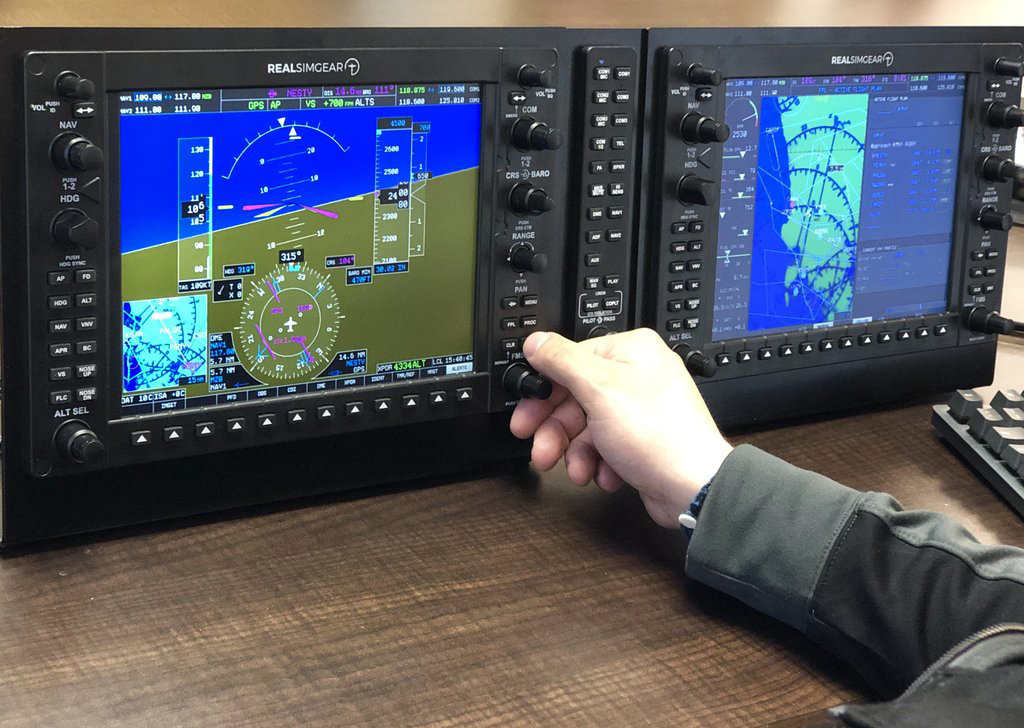Channel James Bond, Fly the World’s Smallest Jet
Ride along on a Microsoft Flight Simulator 2020 journey in a Bede BD-5J.

Bede BD-5J in Microsoft Flight Simulator 2020. Image courtesy of Patrick Chovanec]
For this session in Microsoft Flight Simulator 2020, I’m flying the Bede BD-5J, the world’s smallest jet, famous for being flown by Roger Moore as James Bond in Octopussy.
The BD-5J is very popular at airshows, so I’m flying it today out of Oshkosh (Whitman Regional Airport, KOSH) in Wisconsin.
The BD-5 was designed in the late 1960s by Jim Bede, an ambitious thinker remembered (when he died in 2019) as someone who “made lots of promises, convincingly, if you ask around, and even delivered on a few of them.”
The BD-5 was a kit plane to be sold for about $3,000 (then the price of a Volkswagen) and assembled by enthusiasts at home. It’s 4 feet, 2 inches tall, and less than 14 feet long, with a wingspan of 22.5 feet. The lightest weighs in at just 358 pounds.
Some versions had a push propeller engine in the back, but the BD-5J had a jet. But after thousands of people putting down a $200 deposit and receiving partial kits, Bede could not find a suitable jet engine.
After several years of struggling, the company went bankrupt in 1979, stranding customers with half-built planes.
But the BD-5J’s popularity got a huge boost in 1983 when it was featured in the opening sequence of the James Bond movie Octopussy. (The plane does NOT have fold-up wings, as portrayed in the movie).
As a result, many people completed their BD-5Js with whatever engine they could get their hands on, and they became very popular doing aerobatic stunts at airshows.
The problem is that a lot of these engines tended to either flame out or melt or set the BD-5J on fire, leading to a horrific accident rate. It is estimated that 15 percent of all flights in a BD-5J have ended in fatalities. Yeah, there’s no decimal point there. 15 out of 100 flights. I’m sort of hoping that today I’ll be in the lucky 85 percent.
In the sim, the BD-5J is incredibly agile. It rolls on a dime and recovers immediately. You can roll, roll, roll, and then stop when you want. Based on interviews I’ve seen with pilots, it sounds like that’s fairly accurate. They describe it as stable yet maneuverable.
At first, though, I did find it difficult to do a loop. Despite starting with a dive to maximum speed, it would stall out at the top, and I’d end up doing a hammerhead or an Immelmann at best. Love the smoke showing your trail.
Despite this, it was always easily recoverable, though the stall horn went off a lot.
Pilots report that they’ve reached 320 mph in the BD-5J, and the original aircraft was approved for aerobatics up to six Gs. Whoosh! That’s a wild ride.
I finally figured out, though, that the key to a successful loop was turning on the fuel pump. That way you barely made it over the top.
In the sim, it’s one hell of a fun airplane, and many pilots who’ve flown it agree. But the fact is that a lot of very experienced airshow pilots have been killed flying in it.
Besides air-show displays, the BD-J5 has been put to one practical use. The U.S. military has used the fast but tiny plane as a stand-in for cruise missiles in training exercises for its identical radar signature.
Time to come home and enter the pattern to land back at Oshkosh. The BD-5J burns fuel at about 50 gallons per hour, giving it only about 45 minutes of flying time.
In the sim, at least, the BD-5J gains speed easily when the nose is down and descending. The first time, I came in too high and too hot and had to go around.
The next time, I was right on the money: about 85 knots. I’ve heard pilots say the hardest part about flying the BD-5J is landing it because you’re so low to the ground, almost like driving a go-cart. If you try to flare at the same height and sight picture as a Cessna, for instance, you’ll stall out and land hard. Instead, you basically have to fly it onto the runway.
One of the lead developers of the BD-5J, Burt Rutan, later went on to form his own company and design such ground-breaking aircraft as the Long-EZ, Voyager, SpaceShipOne, and the Stratolaunch–the last of these the world’s largest airplane by wingspan.
Hope you enjoyed a fun ride in the Bede BD-5J, the world’s smallest jet.
If you’d like to see a version of this story with more screenshots and historical images, you can check out my original post here.
This story was told utilizing AzurPoly’s Bede BD-5J add-on to MSFS2020, along with sceneries produced by fellow users and shared on flghtsim.to for free.

Sign-up for newsletters & special offers!
Get the latest FLYING stories & special offers delivered directly to your inbox






